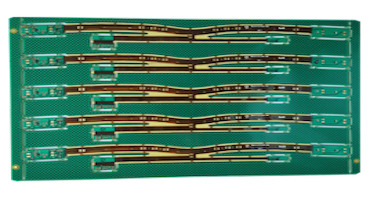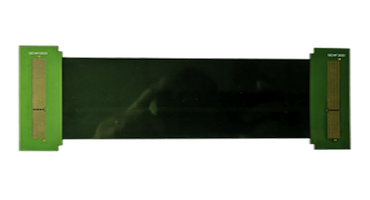What Is
Flex PCB
Flex PCB stands for Flexible Printed Circuit Board. It is a type of printed circuit board that is designed to be flexible, allowing it to bend or conform to the shape of the device or system it is integrated into. Flex PCBs provide a versatile and space-efficient solution for electronic applications where traditional rigid PCBs may be impractical.
Flex PCBs offer a versatile solution for design engineers looking to address challenges related to space constraints, form-factor considerations, and applications requiring flexibility and durability.
Key features and characteristics of Flex PCBs include:
Flexibility
The primary characteristic of Flex PCBs is their flexibility. They can be bent, folded, or twisted to fit into tight or irregular spaces within electronic devices. This flexibility is advantageous in applications with space constraints or where a conformal design is needed.
Thin and Lightweight
Flex PCBs are typically thinner and lighter than rigid PCBs, contributing to the overall weight and thickness reduction in electronic devices. This is especially important in portable and lightweight applications.
Space Efficiency
The ability to bend and fold Flex PCBs allows for efficient use of space within a device. This is particularly beneficial in small form-factor devices such as wearables, smartphones, and medical implants.
Reduced Complexity
Flex PCBs can reduce the need for connectors and solder joints, simplifying the assembly process. Fewer components and interconnections can enhance reliability and reduce manufacturing costs.
Reliability
Flex PCBs are well-suited for applications where there may be movement or mechanical stress. Their ability to flex makes them resilient in dynamic environments, such as in automotive applications or devices subject to bending or folding.
High-Density
Despite their flexibility, Flex PCBs can support high-density interconnections, making them suitable for applications requiring intricate circuit designs and miniaturization.
Applications
Flex PCBs find applications in various industries, including consumer electronics, automotive, aerospace, medical devices, and industrial equipment. Common applications include flexible displays, flexible circuits in wearables, automotive sensors, and more.
Materials
Materials used in Flex PCBs include flexible substrates such as polyimide or polyester. These materials provide the required flexibility while maintaining electrical performance.



